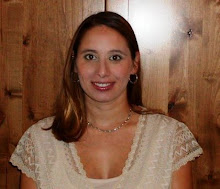
Greetings archaeology enthusiasts, our week out in the field was very interesting! This week started off hot and cooled down a bit as it progressed. We started each day at 6:30am to beat the heat of midday. I know that sounds early, but when you get out there knowing it is going to be blazing later that day, it motivates you. So here is a run down on what happened this past week.
I made an executive decision to alter the plan a little in regards to the size and frequency of the test pits. After opening up the two 1x1 ft test pits last week, we were having a little trouble getting into them because of some extremely compacted red clay. After taking the weekend to think it over I thought it best to open the test pits up into 2x2 ft units. This meant more dirt, but it made it a lot easier, somewhat, to hack at the red clay layer. The red clay layer I speak of is pictured in one of the open units above. Since these units are bigger, I also decided that the 40ft interval between the units would become the highest frequency of the survey.
Opening up the units helped in two important ways. First, it allows us to examine each hole to a higher degree, giving us a better understanding about an area. For example, STP #2 was one of the two test pits initially opened. When we got ourselves through the red layer, there was another disturbed layer underneath. However, when we opened the test pit up into the 2x2ft unit, we discovered a line dividing the east and west portion of the unit (see picture). Not exactly sure what the significance of it is yet, but it is located in one of the proposed pathways, so it could (maybe) be remnants of a previous pathway. Without opening up the units we would have written this area off as being disturbed. Second, we are now able to handle any features that may turn up in the units. Before, there were simply too many test pits that needed to be dug that digging the features would have been overwhelming. Going back to STP #2, now square 2, we are not sure if the line is dividing a portion of a feature or simply the next level. However, if we had continued with the original plan we would stop when we got to what we thought was a feature.
We moved a little slow this week, due to some vicious red clay. Let me tell you folks this soil is so compacted that when we hit it with our trowels, it is like striking concrete. This type of compacted soil is IMPOSSIBLE to trowel, so we have to break out the big tools for literally hacking our way thorough it. We have two very large 10lbs pickaxes, two mini ground breakers, and two floor tile chisels that we use interchangeably. These tools were very beneficial in getting through the red clay layer in squares 1, 2, & 3. Each unit is unique as to its depth of this compacted red clay, but they all have it.
We also opened up two more units in the northwest corner of the block, so we now have a total of 5 units open, all at different levels. It is really interesting to see all of them open at the same time, being that they are all at different levels of progression. I invite anyone interested in seeing them to come on out and take a peek. Next week, we hope to get down to subsoil in a couple of the units. Square 1, pictured above, has finally reached what I think may be the first undisturbed level in the units and is almost 2 ft deep. I hope to update on this more next week.
I was fortunate to have several volunteers come out this week. Thanks so much to Jakob Crockett, Lauran Riser, and Mick Wigal. You guys are awesome! We also have one other full time archaeologist working on the project. Ben Johnson, a fellow archaeology grad student, will be working with me all summer and his help will be invaluable, thanks Ben! (Ben just got married two weeks ago, so congrats to him!)
See you next week!
Helena Ferguson
Primary Investigator



No comments:
Post a Comment